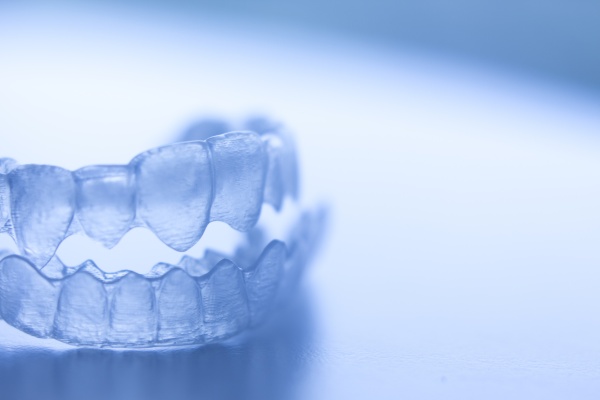What Happens After Completing the Invisalign Treatment?

The road to a beautiful smile with straight teeth is easier than ever with Invisalign® trays. However, the process does not end after completing treatment with a dentist. Instead, there is an ongoing method individuals should follow to retain that smile for years to come.
The process after treatment
Many people assume once treatment with aligner trays is over, there is nothing further to do. Unfortunately, that is not true. The next step in the process is to wear a retainer to prevent teeth from shifting or reverting to the starting point.
The reason why wearing a retainer is necessary
Invisalign® trays work like braces by exerting force and pressure on the teeth so the teeth shift position gradually and straighten out. Once that force is removed, such as when treatment is finished and an individual no longer wears the aligners, the teeth may begin to move without the constant presence. To prevent this, a retainer is worn to help teeth keep the shape the aligners created.
The various retainer options
The good news is that there are different retainer options for individuals to wear. There is the traditional retainer that uses a strong wire, as well as a plastic-like shell, to help teeth hold shape. Another method is a retainer that looks similar to an Invisalign® tray but is stronger than other clear retainers on the market and has the capability to help teeth retain the new alignment. It is important to note that wearing the last aligner used during the straightening process is not a good idea as it loses its ability to put pressure on teeth after a while and can become yellow and worn with age.
The length of time a retainer should be worn
After hearing that a retainer is necessary to keep the smile an individual worked so hard to obtain, the question asked most often is how long the retainer needs to be worn. The answer is that it is different for every person. However, there are a few simple guidelines that can help prepare individuals for the after-treatment process.
At first, it is necessary to wear the retainer full time once the Invisalign® treatment is complete. After a certain period that is determined by the dental professional, this may be reduced to only wearing the retainer at night during sleep. Over time, this may be reduced even further to the point where an individual wears the retainer only a few times a week. In the beginning, the timeframe is set by the dental professional, but over time the choice is up to the individual based on how the teeth respond to the retainer schedule.
Conclusion
Congratulations on achieving a smile that dreams are made of. The process of straightening your teeth with Invisalign® is over, but it is important to help teeth retain the new shape by wearing a retainer. Be sure to speak to a professional to understand how long to wear the retainer and for proper care instructions.
Are you considering Invisalign® in the Visalia area? Get more information at https://www.dentistofvisalia.com.
Check out what others are saying about our services on Yelp: Read our Yelp reviews.
Related Posts
When you visit your dentist, preventative dental care should be at the forefront of your mind. Nobody enjoys getting extra work done because of the cost and time and because it can result in some uncomfortable procedures. Cavities, gingivitis, and other diseases are preventable with the correct oral hygiene. X-rays and cleanings done at your…
Dental laminate treatments offer a minimally invasive solution for patients looking to enhance their smiles. Both dental laminates and veneers improve the appearance of teeth by covering imperfections such as discoloration, chips, and minor misalignments. While these treatments serve a similar purpose, their differences impact durability, preparation, and overall aesthetic outcomes. Understanding these distinctions can…
Preventative dental care is one of the most important ways to take care of your teeth and gums.Having a healthy smile can give you more than a great first impression. Taking care of your teeth is important in maintaining your overall body health as well. If you don’t take proper care of your teeth, you…
Fluoride treatments are very important in preventative dental care. Every patient wants their dentist to provide them with all the necessary tools to keep their smile bright and white. You go to the dentist twice a year as recommended and brush and floss your teeth regularly.Doing your part in your oral care routine only goes…
